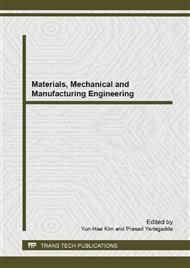p.247
p.255
p.259
p.263
p.267
p.271
p.275
p.279
p.284
Prepare and Properties of Titanium with Surface Nanostructure by High Energy Shot Peening
Abstract:
The investigation was carried out to study the effect of a novel process of surface modification, surface nanocrystallization by high energy shot peening (HESP), on osteoblast proliferation and differentiation. A disc of pure titanium was processed to HESP in a commercial shot peening equipment, to create nanostructure at the surface. The surface microstructure was characterized by SEM and osteoblasts were co-cultured with the surface nanostructured titanium and unreceived titanium surface to evaluate their biocompatibility. The nanostructured surface layer on titanium was successfully processed by HESP, and the nanosized grains were about 60 nm in diameter and inhomogeneous distributed on the surface of n-Ti. The results also confirmed the proliferation and differentiation of osteoblasts were highly improved on surface nanostructured titanium. This finding suggests that there is high potential of this novel surface modification process which could enhance bone tissue growth of dental implant.
Info:
Periodical:
Pages:
267-270
Citation:
Online since:
November 2013
Authors:
Price:
Сopyright:
© 2014 Trans Tech Publications Ltd. All Rights Reserved
Share:
Citation:


